Top 10 Biggest Cobalt Mines of the World by Production
| Table of Contents |
What is Cobalt and Cobalt Production in the World Today
Cobalt is a high melting point metal with the chemical symbol Co and atomic number 27. Its melting point is 1495°C. Cobalt is ductile, ferromagnetic, and has a silvery gray metal luster.
Metal cobalt (Co) is used in a wide range of industrial, military, and commercial applications, many of which are crucial and strategic.
The names "industrial tooth" and "industrial monosodium glutamate" refer to cobalt, a very scarce small metal resource. It is an essential strategic resource. Copper-cobalt ore, nickel-cobalt ore, arsenic-cobalt ore, and pyrite deposits are the primary sources of cobalt resources. Rare are independent cobalt minerals. While there aren't many land reserves, cobalt can be found in significant quantities in seabed manganese tuberculosis.
Cobalt is currently used primarily in battery materials, super heat-resistant alloys, tool steels, hard alloys, and magnetic materials. Cobalt compounds are used primarily as catalysts, desiccants, reagents, pigments, and dyes. An extremely common radioactive substance is cobalt-60. It is frequently used in radiological diagnosis and treatment, electroplating, corrosion, and catalysis for tracer research, as well as biochemistry for activation analysis.
Cobalt is one of the key raw materials used in the production of high temperature alloys, hard alloys, ceramic pigments, catalysts, and batteries due to its excellent high temperature resistance, corrosion resistance, and magnetic performance. It is also used extensively in the manufacturing of machinery, electrical and electronic equipment, chemical, and ceramic products.
One of the few metals that can maintain its magnetic properties with just one magnetization is cobalt. The Curie point is the temperature at which magnetic loss begins to occur when heat is applied. Iron has a Curie point of 769 °C. Nickel has a Curie point of 358 °C. Cobalt has a Curie point that can reach 1150°C. A magnetic steel that contains 60% cobalt has a coercive force that is 2.5 times greater than a typical magnetic steel. In vibration, cobalt steel only loses 2% to 3.5% of its magnetism compared to nearly one-third for conventional magnetic steel. Cobalt is used extensively to create high-performance magnetic materials because of its superior magnetic properties.
Cobalt has gained more attention recently as a result of its use in lithium-ion batteries that power electric vehicles.
The Democratic Republic of the Congo (DRC) produced 95,000 tonnes of cobalt in 2016, accounting for nearly 60% of the world's supply, making it by far the largest cobalt producer in the world.
Here is a summary of the largest cobalt mines in the world, based on the most recent data from S&P Global Market Intelligence, for investors who are interested in learning more about the industry.
According to the mining database of GlobalData and other sources, the ten largest cobalt mines by production are listed below (Ranked and recommended by KnowInsiders.com).
Top 10+ Biggest Conbalt Mines in the World Today
1. Metalkol RTR Project, Congo
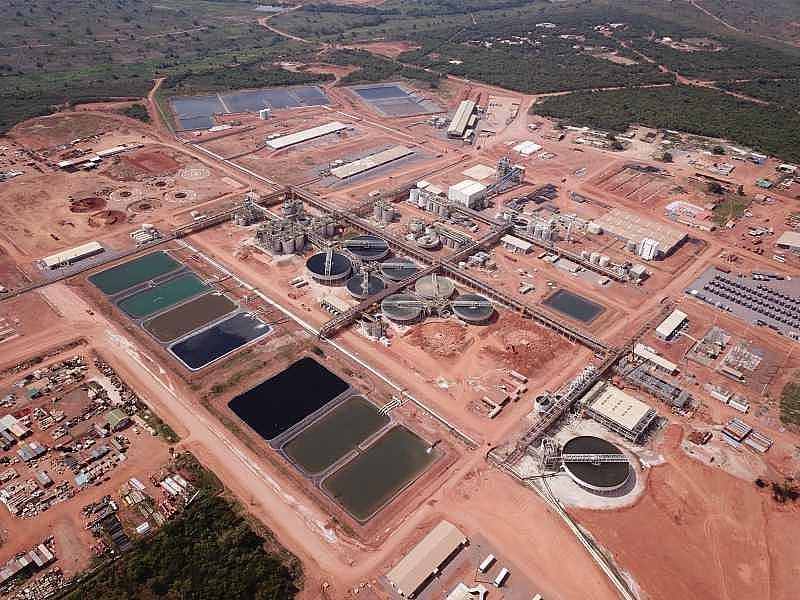 |
| Metalkol RTR Project in Congo - the Biggest Cobalt Mine in the World Today |
A surface mine called the Metalkol RTR Project is located in Katanga, Democratic Republic of the Congo.
The brownfield mine, owned by Eurasian Resources Group, is expected to produce 57.06 thousand tonnes of cobalt in 2022. Production in 2020 will be 10,500 tonnes.
Eurasian Resources Group (ERG) Africa runs the hydrometallurgical Metalkol RTR cobalt and copper facility, which is situated in the Haut-Katanga province of the DRC.
Metalkol RTR reprocesses historical cobalt-copper tailings that previous operators accumulated over many years of mining. This includes the tailings deposit that is currently present in Kingamyambo and those in the Musonoi River. By transferring legacy tailings to a facility that is properly managed, the aim is to lessen local pollution.
The Responsible Minerals Initiative's Responsible Minerals Assurance Process is supported by ERG. The business works to eradicate child labor in the DRC's mining sector.
2. Tenke Fungurume Mine, Congo
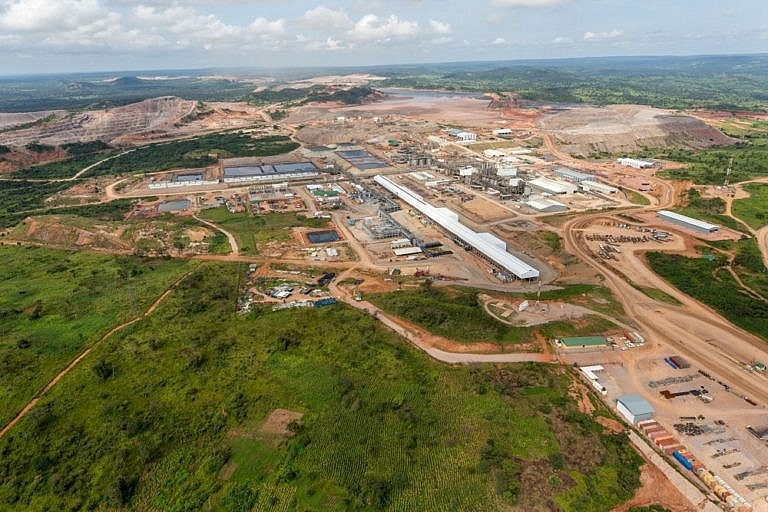 |
| Tenke Fungurume Mine in Congo |
The Tenke Fungurume Mine is a property of the CMOC Group and is situated in Katanga, Democratic Republic of the Congo.
In 2022, the surface mine is expected to produce 19,000 tonnes of cobalt. Production for 2020 will be 15,440 tonnes. Till 2047, the mine will be in operation.
Tenke Fungurume, which is based in the DRC's Lualaba province, is owned by China Molybdenum (OTC Pink:CMCLF,SHA:603993) to the tune of 80%, and state mining firm Gecamines to the tune of 20%.
Increasing taxes and royalties in the African nation, combined with declining metal prices, have made it difficult for Tenke Fungurume to meet production goals. From 2019 levels, production decreased by more than 650 tonnes in 2020. The mine also produces cobalt and is the biggest copper producer in the DRC.
3. Sicomines Copper-Cobalt Mine, Congo
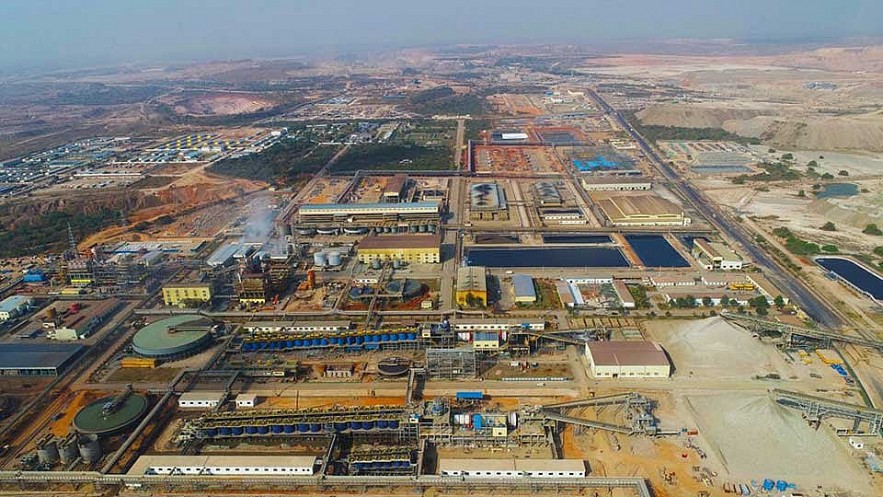 |
| Sicomines - Largest Cobalt Mine in the World. Credit: Sicomines |
In Katanga, Democratic Republic of the Congo, there is a surface mine called Sicomines Copper-Cobalt Mine (Sicomines).
The greenfield mine, owned by China Railway Group, generated 17.41,000 tonnes of cobalt in 2022.
The Congolese state miner Gecamines is a partner in the Sino Congolaise des Mines JV, which is primarily owned by Chinese businesses.
To gain more control over its resources, the Democratic Republic of the Congo intends to increase its ownership of a joint venture (JV) with Chinese firms that produces copper and cobalt. The goal is to increase the JV's stake from 32% to 70%.
According to a document seen by the news agency, Congo's plans to exert more control over the JV's management are motivated by worries that the current arrangement offers the nation little benefit. Plans by the nation are announced just before negotiations to restructure a $6 billion infrastructure-for-minerals agreement.
According to the commission, the nation is requesting a larger stake in Sicomines because it failed to take into account the $90 billion in reserves that Gecamines brought to the transaction.
Congo should also think about acquiring a 60% stake in Sicomines and a 10% non-dilutable stake for the government.
According to the commission, Chinese businesses will own the remaining 30%.
Sinohydro and China Railway Group made a deal to forgo a 68% stake in the JV in exchange for building roads and hospitals.
4. Kamoto (KOV) Mine, Congo
The KOV Mine, a surface mine in Katanga, Democratic Republic of the Congo, is owned by Glencore Plc.
In 2022, the brownfield mine is expected to produce 13.48 thousand tonnes of cobalt. Production for all of 2020 is 23,900 tonnes.
The Katanga province of the Democratic Republic of the Congo (DRC) is home to the Kamoto copper-cobalt mine, which is run by Glencore (LSE:GLEN,OTC Pink:GLCNF) subsidiary Katanga Mining.
Cobalt production in Katanga increased by 40% in 2020 compared to 2019. Since the start of commercial operations in 2007, production at Kamoto has gradually increased.
Early in 2021, cobalt refiner First Cobalt (TSXV:FCC,OTCQX:FTSSF) and Glencore signed a five-year supply agreement for cobalt hydroxide from Kamoto.
5. Mutanda Cobalt Mine, Congo
Surface mining is done at the Mutanda Mine, which is in Katanga, Democratic Republic of the Congo. The greenfield mine, owned by Glencore Plc, will produce 11.55 thousand tonnes of cobalt in 2022.
The Mutanda mine produced 25,100t of cobalt hydroxide and 103,200t of copper in 2019, with five copper production lines and three cobalt hydroxide lines.
The massive copper and cobalt mine, which is situated in the province of Katanga, also generates copper cathodes and cobalt hydroxide.
Glencore restarted production at the Mutanda mine in early 2022 after it had been put on care and maintenance since November 2019. Ivan Glasenberg, the CEO of Glencore, made the decision to halt operations at the mine in 2019 as a result of rising costs, falling cobalt prices, and higher taxes.
The mine should continue to run until 2041.
6. Mashamba East Mine, Congo
A surface mine called the Mashamba East Mine can be found in Katanga, Democratic Republic of the Congo.
The brownfield mine, owned by Glencore Plc, is expected to produce 10,000 tonnes of cobalt in 2023.
The mine has a footprint measuring 11.04 square kilometers (4.26 square miles). The Kolwezi Nappe, a northeast striking synclinal basin measuring about 20 kilometers (12 miles) long by 10 kilometers (6.2 miles), contains where it is situated.[2] With Mashamba West and then Dikuluwe Open Pit to the west, the mine is the easternmost of the Dima pit group.
The mine ran from 1985 to 1988, producing 9.8 million tonnes of ore with an average grade of 4.96% copper and 0.35% cobalt during that time. Due to a lack of funding, the pit was allowed to flood in 1998. Katanga Mining intended to reopen the mine after purchasing it. There were 75 million tons of measured and indicated resources with 1.80% copper and 0.38% cobalt as of 2009. Dewatering preparations were postponed until 2016.
Before the majority of the ownership of the Dima mines was sold to Katanga Mining and Nikanor in the early 2000s, they were initially owned by the state-owned Gécamines. There was a rumor that the Dikuluwe and Mashamba West deposits were being transferred to Gécamines and would be exploited by a joint venture owned 32% by Gécamines and 68% by a Chinese consortium following the amicable merger of the Katanga Mining and Nikanor assets. As of 2009, a joint venture consisting of 75% Katanga Mining and 25% Gecamines owned the exploitation rights to the Mashamba East mine.
7. Etoile Mine, Congo
Shalina Resources is the owner of the Etoile Mine, which is situated in Katanga, Democratic Republic of the Congo. In 2022, the surface mine is expected to produce 6.29 thousand tonnes of cobalt. 2020 production will total 7,000 tonnes.
The mining rights to Etoile, which makes copper and cobalt oxides and sulfates, were given to a private company called Chemaf in 2003. Up until 2000, the Ruashi-Etoile concession in the Katanga province of the DRC was occupied by artisanal miners before being divided and made available to private investors.
Shalina Resources-owned Chemaf is also building a processing facility to enable it to produce up to 16,000 tonnes of cobalt at its Mutoshi mine in the province of Katanga.
8. Ruashi Cobalt Mine, Congo
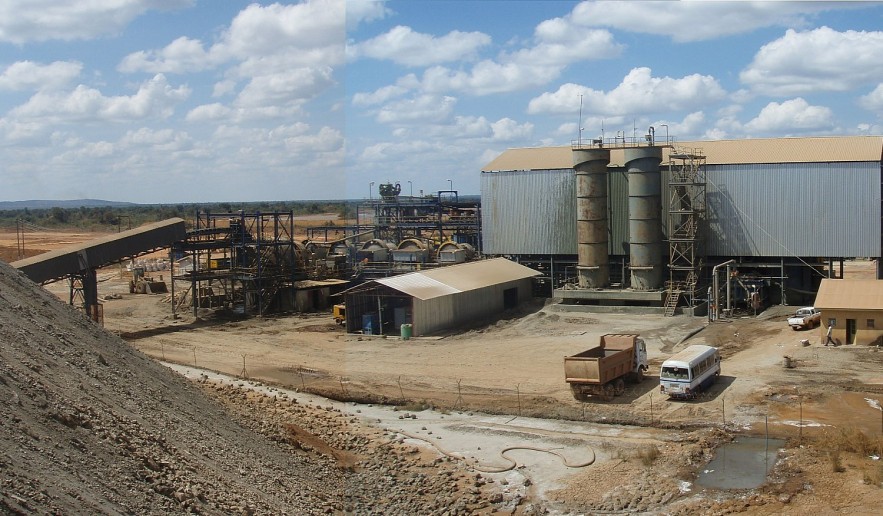 |
| Ruashi Mine |
The Democratic Republic of the Congo's Katanga region is home to the surface mine known as the Ruashi Mine.
The brownfield mine, owned by Jinchuan Group, is expected to produce 5.21 thousand tonnes of cobalt in 2023. Till 2028, the mine will be in operation.
The Ruashi Mine, an open-pit copper and cobalt mine run by Metorex, is situated in Katanga Province, Democratic Republic of the Congo, about 10 kilometers (6.2 mi) from Lubumbashi. A modern solvent extraction electrowinning (SX-EW) processing plant and a plant to concentrate ore from the Ruashi and Etoile mines are both included in the project. Approximately 10,000 tonnes of copper and 1,000 tonnes of cobalt could be produced annually as of 2008.
At a height of approximately 1,285 meters (4,216 feet) above sea level, the Ruashi mine can be found. The region experiences a subtropical climate with an average annual rainfall of 1,200 millimeters (47 in), most of which falls from October to March. There is little difference in temperature between summer and winter, with average temperatures falling between 17 °C (63 °F) and 24 °C (75 °F). The area is located in a zone where Miombo Woodland, tropical deciduous woodlands, are naturally present. Much of the woodland that borders Lubumbashi has been cleared.
In 1907, Tanganyika Concessions dug pits and trenches nearby. The Etoile ore body and the Ruashi ore body were discovered by Union Minière du Haut Katanga (UMHK) in 1911 and 1919, respectively. Both properties' high-grade copper ore was periodically quarried over the course of the following fifty years. In 1967, UMHK became nationalized. Gécamines, which was established as the state mining company, was given complete control over all copper and cobalt exploration and production.
Ruashi Mining, which now owns 20% of the DRC state-owned Gécamines and 80% of the South African company Metorex, operates the Ruashi mining project. Metorex now owns 75% of Ruashi Mining.
9. Weda Bay Project, Indonesia
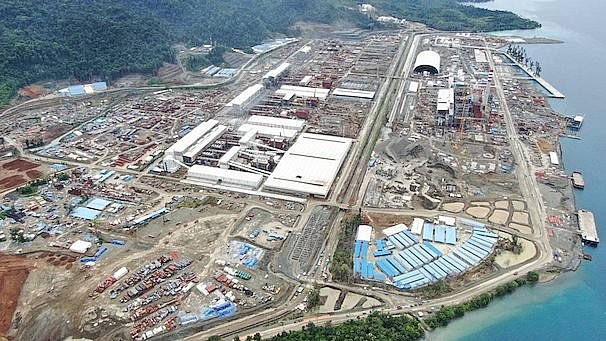 |
| Weda Bay Project |
The Weda Bay Project is a surface mine located in Maluku, Indonesia, and is owned by Tsingshan Holding Group.
In 2023, the greenfield mine is expected to produce 4.36 thousand tonnes of cobalt. The mine is anticipated to close in 2069.
The open-pit nickel-cobalt mining operation known as the Weda Bay Nickel Project is situated on Indonesia's Halmahera Island. Weda Bay Nickel, a joint venture between the Chinese Tsingshan Holding Group (57%) and the French mining and metallurgy company Eramet (43%) owns and runs it.
The nickel laterite deposits on Halmahera Island were discovered for the first time in 1996, and the Weda Bay Nickel company was founded the following year as a joint venture between Weda Bay Minerals (90%) of Canada and Antam (10%) of Indonesia.
The project was put on hold even though Eramet purchased the property from Weda Bay Capitals in 2006 due to Mitsubishi Corporation, Eramet's partner, leaving the project in 2013.
Eramet and Tsingshan entered into a contract in 2017 under which Tsingshan would build and run the processing infrastructure facilities while Eramet would take care of the mining operations.
10. Moa Joint Venture Project, Cuba
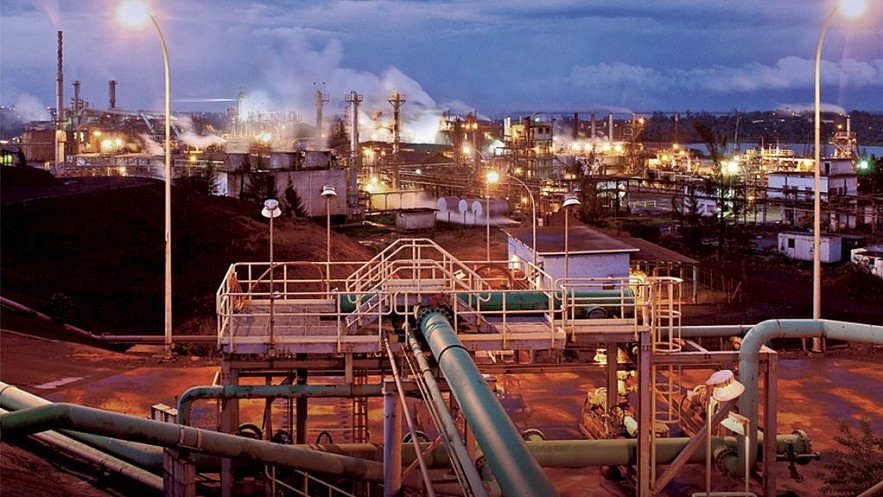 |
| Moa Joint Venture Project |
In Holguin, Cuba, there is a surface mine called the Moa Joint Venture Project.
The brownfield mine, owned by Sherritt International, is expected to produce 3.55 thousand tonnes of cobalt in 2022. The mine should continue to run until 2040.
According to Canadian company Sherritt, the expansion program at the Moa Nickel and Cobalt Joint Venture (JV) in Cuba is scheduled to be finished next year (2024) on schedule and within budget.
With a capital intensity of $13 200/t of contained nickel, the two-phase, $77 million expansion will increase total mixed sulphide precipitate (MSP) intermediate production by 6 500 t of contained metals.
The expansion is part of Sherritt's strategy to position the business as a leading producer of green metals, increasing production by up to 20% from the combined 34 710 t produced in 2021.
Sherritt predicts that of the increased production, two-thirds of the Moa feed will be converted into finished nickel and cobalt, with the remaining material having the potential to be sold as MSP into the supply chain for EV batteries.
The Moa JV anticipates funding its own growth capital expenditures primarily from operating cash flows. The SPP, ordering of long lead items, and fundamental engineering work associated with the expansion program accounted for the majority of the $14.8 million (100% basis) increase in total growth spending on capital in 2022.
According to Sherritt, civil construction on the SPP is 100% finished, and all contracts for the supply of materials and services have been awarded. Construction is proceeding according to schedule. Pre-fabrication of structural steel is still ongoing, with 65% of it erected, and field assembly of significant equipment has begun.
More Biggest Cobalt Mines in the World• Australia’s Murrin Murrin mine (2,900 tonnes) • Madagascar’s Ambatovy (2,860 tonnes) • Russia’s Polar Division (2,700 tonnes) • The Phillipines’ Taganito (2,550 tonnes) • Morocco’s Bou-Azer (2,420 tonnes) |
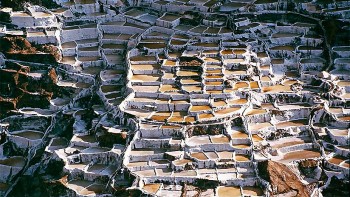 Top 10 Largest Underground Salt Mines in the World Top 10 Largest Underground Salt Mines in the World Let's explore the largest underground salt mines in the world today. These salt mines are also a tourist destination visited by many tourists. |
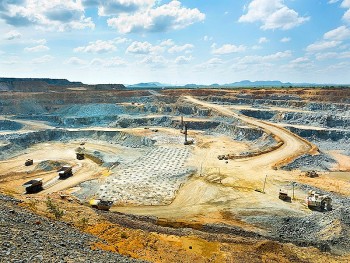 Top 10 Largest Platinum Mines in the World Top 10 Largest Platinum Mines in the World There are more than 68 platinum mines in operation globally today. Join KnowInsiders.com to explore the 10 largest platinum mines in the world that are ... |























